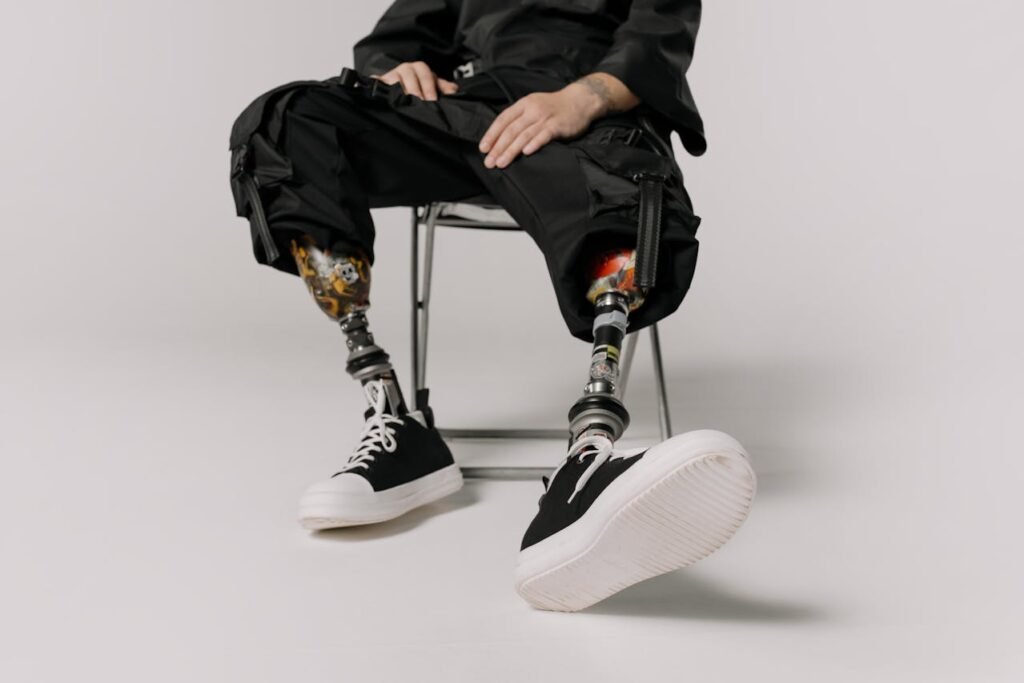Prosthetic limbs have long been considered one-time medical purchases, where users pay a large sum upfront to receive an artificial limb that may need adjustments or replacements over time. But as technology advances, the landscape of prosthetic care is changing. With AI-powered prosthetics, real-time updates, and cloud-based enhancements, will the future of prosthetic limbs move toward a subscription-based model?
Between 2025 and 2030, many industries, including healthcare and assistive technology, are shifting towards subscription-based services. Instead of a single expensive purchase, companies now offer products as “technology as a service,” allowing users to pay monthly or yearly fees for ongoing improvements, maintenance, and support. The question is whether this approach could work for prosthetics. Would a subscription-based prosthetic model be more affordable and convenient for users, or would it create new challenges?
At Robobionics, we are closely following this shift in the prosthetic industry and evaluating how subscription models could shape the future of bionic and AI-powered limbs. In this article, we explore whether prosthetic limbs will follow the tech industry’s subscription model, what benefits and drawbacks this approach may have, and how it could impact accessibility for amputees worldwide.
1. Why the Prosthetic Industry is Moving Toward Subscription-Based Models

Traditional prosthetics require a large upfront investment, often costing anywhere from ₹50,000 to ₹5,00,000 or more, depending on the complexity of the limb. For many users, this cost can be a significant burden, especially when considering that prosthetic limbs wear out over time, require maintenance, and may need upgrades to keep up with new technology.
With subscription-based technology, users would pay a smaller monthly fee instead of a massive upfront cost, allowing for continuous access to the latest prosthetic advancements without worrying about outdated devices. This approach has already been adopted in various industries, from software and smartphones to electric vehicles, where users pay for ongoing improvements rather than purchasing a static product.
By 2030, more prosthetic companies may move toward this model, offering hardware as a service (HaaS) for artificial limbs. Instead of buying a single device that stays the same, users could receive automatic software updates, cloud-connected performance tracking, and even physical hardware upgrades as part of their subscription plan. This would ensure that prosthetic wearers always have access to the latest advancements in AI, robotics, and real-time adaptability.
2. How a Subscription-Based Prosthetic Model Would Work
If prosthetic limbs became part of a subscription-based model, the pricing structure and services would differ significantly from the traditional one-time purchase system. Users would no longer own their prosthetic limb in the conventional sense but would instead be part of a long-term service plan that guarantees continued functionality, maintenance, and enhancements.
A subscription plan for prosthetic limbs might include several tiers of service. A basic plan could provide users with access to standard prosthetic components and occasional software updates, while a premium plan could include full AI-driven enhancements, real-time adjustments, cloud-based learning, and free hardware upgrades every few years.
This model could also include on-demand repairs and remote diagnostics, ensuring that any technical issues or malfunctions are quickly addressed. Users would no longer have to worry about expensive out-of-pocket repair costs, as maintenance would be covered under their subscription. By 2030, prosthetic users could access advanced AI-driven limb functionality for a monthly or annual fee, making high-tech prosthetics more accessible to a larger population.
3. The Benefits of Subscription-Based Prosthetic Limbs
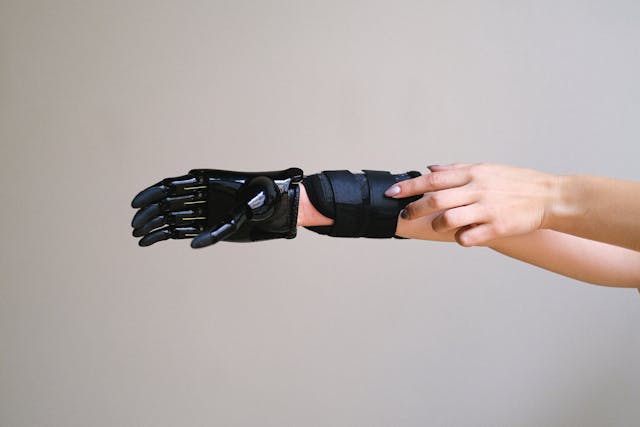
One of the most significant advantages of a subscription-based prosthetic system is affordability. Many people struggle to afford high-end bionic limbs, but a subscription model could make cutting-edge prosthetics financially accessible by spreading out costs over time.
Another benefit is continuous innovation. Traditional prosthetic limbs become obsolete over time, as newer models introduce better features, improved materials, and more advanced AI capabilities. Under a subscription model, users would receive regular updates and hardware enhancements, ensuring that they never fall behind on the latest advancements in prosthetic technology.
A third key advantage is better customer support and repair services. Prosthetic users often deal with wear and tear, mechanical failures, or the need for recalibration. With a subscription, repairs could be included in the service package, allowing for quick replacements and adjustments without additional costs. By 2030, subscription-based prosthetic care could eliminate many of the common frustrations users face with current prosthetic systems, providing a more seamless and stress-free experience.
4. Potential Drawbacks and Challenges of Subscription-Based Prosthetic Models
Despite its advantages, the idea of subscription-based prosthetic technology is not without challenges. One of the biggest concerns is long-term costs. While a subscription might lower the upfront expense, users may end up paying more in the long run compared to a one-time purchase. Over a lifetime, the cumulative cost of a monthly fee could surpass the price of a traditional prosthetic limb.
Another issue is ownership and dependency. In a subscription model, users may never fully “own” their prosthetic limbs. If a person stops paying for their subscription, would they lose access to essential features or even the prosthetic itself? This raises ethical concerns about what happens if a user can no longer afford the payments.
Additionally, not all users need constant updates and enhancements. Some amputees may prefer a one-time purchase with occasional maintenance rather than an ongoing service plan. By 2030, prosthetic companies will need to carefully balance the benefits of subscription services with user flexibility to ensure that amputees are not forced into a financial model that doesn’t suit their needs.
5. Will Insurance Companies and Governments Support Subscription-Based Prosthetics?
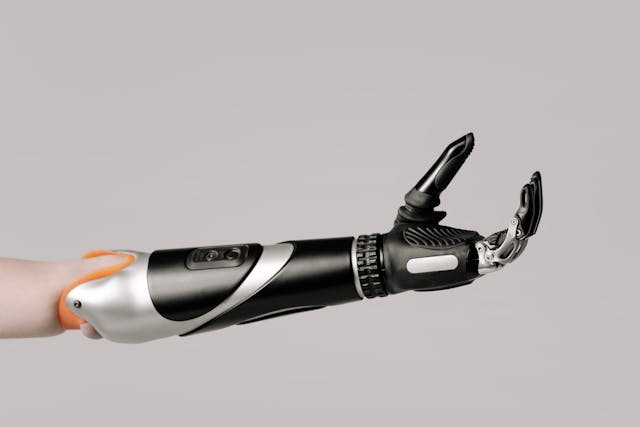
For subscription-based prosthetics to succeed, insurance providers and government healthcare systems will need to adapt to this new model. Currently, many insurance plans cover the cost of prosthetic limbs as a one-time purchase, but they do not support ongoing monthly payments for medical devices.
If insurance companies begin to recognize the value of continuous prosthetic care, they may start offering coverage for subscription-based models, treating them as essential medical services. Governments may also introduce subsidized plans for individuals who cannot afford private insurance, ensuring that everyone has access to modern, AI-powered prosthetic limbs.
By 2030, healthcare systems will need to evolve to accommodate new prosthetic technologies, creating policies that support both traditional ownership models and subscription-based alternatives. The success of this shift will depend on how well insurance companies and regulatory bodies adjust to the changing landscape of assistive technology.
6. The Future: Will Subscription-Based Prosthetic Limbs Become the New Standard?
With rapid advancements in AI, robotics, cloud computing, and smart materials, the prosthetic industry is at a turning point. Subscription-based models offer a way to continuously improve prosthetic limbs, making them more functional, accessible, and adaptive. However, the transition from traditional ownership to a service-based model will depend on affordability, regulatory support, and user preference.
By 2030, we may see a hybrid approach where users can choose between outright purchasing a prosthetic limb or subscribing to an ongoing service plan. Some people may prefer a one-time investment with occasional upgrades, while others may benefit from continuous innovation, real-time software updates, and AI-powered enhancements through a monthly service.
At Robobionics, we are exploring how next-generation prosthetic technology can be made more affordable and accessible through innovative models. If you’re interested in learning more about how AI-driven prosthetic solutions are shaping the future, book a free demo with Robobionics today and discover how technology is redefining mobility.
7. How AI and Machine Learning Will Drive Subscription-Based Prosthetics

Artificial intelligence is playing a major role in shaping the future of prosthetic limbs, making them more adaptive and efficient. In a subscription-based model, AI-driven prosthetics would continuously learn and improve based on user behavior, offering a level of personalization that has never been possible before.
AI-powered bionic limbs can analyze movement patterns, predict user intent, and adjust grip strength or balance in real-time. If a person starts using their prosthetic limb for different activities, such as playing an instrument or lifting weights, the AI system could fine-tune performance based on past usage data. This type of intelligent adaptation ensures that users always experience the highest level of comfort and control.
By 2030, AI will become a key driver of subscription-based prosthetics, allowing users to benefit from ongoing improvements without needing a completely new device. Instead of upgrading to a new prosthetic limb every few years, users could receive automatic software enhancements that refine movement precision, response time, and energy efficiency.
8. The Role of 3D Printing in Subscription-Based Prosthetics
One of the biggest challenges with traditional prosthetic limbs is manufacturing complexity and cost, making replacements and upgrades difficult. However, 3D printing technology is changing that by enabling rapid, cost-effective production of custom prosthetic components.
With a subscription-based model, users could receive newly printed prosthetic parts as needed, reducing the hassle of expensive replacements. Instead of waiting weeks or months for a new limb to be designed and manufactured, 3D printing allows for same-day or next-day production, ensuring faster access to high-quality prosthetics.
By 2030, 3D-printed prosthetic limbs will make subscription services even more practical, allowing users to customize, replace, and upgrade individual parts without requiring an entirely new device. This will make prosthetics more durable, sustainable, and cost-effective, ensuring that users always have access to the latest advancements in design and materials.
9. How Cloud Connectivity Will Improve Prosthetic Subscription Services
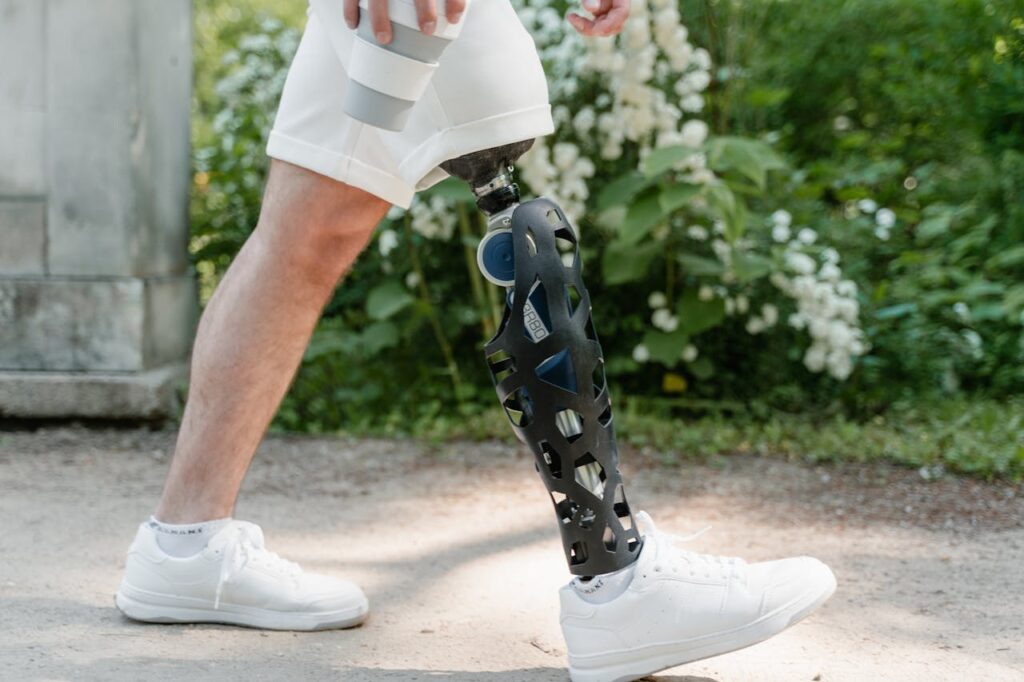
Cloud computing is set to revolutionize prosthetic technology, enabling real-time updates, remote monitoring, and on-demand support. A subscription-based prosthetic model would rely heavily on cloud connectivity, allowing continuous software improvements and AI-driven optimizations.
With cloud-connected prosthetics, users could receive automatic updates that improve performance, similar to how smartphones get software updates. Prosthetic specialists could remotely diagnose issues, adjust settings, and offer personalized recommendations without requiring users to visit a clinic. This would reduce downtime and improve overall convenience.
By 2030, cloud-based prosthetic management systems will be a standard feature in subscription-based models, ensuring that users always have access to the latest upgrades and support services. This will make prosthetic limbs more intelligent, adaptable, and easier to maintain.
10. The Impact of Subscription-Based Prosthetics on Developing Countries
One of the biggest barriers to prosthetic access is cost, especially in developing countries where high-end prosthetics remain unaffordable. A subscription model could make advanced prosthetic limbs accessible to more people worldwide, allowing for lower upfront costs and flexible payment options.
In many developing nations, prosthetic clinics and repair centers are scarce, meaning users often struggle to get maintenance and upgrades. A subscription model could bridge this gap by offering remote support, 3D-printed replacements, and AI-powered performance enhancements, ensuring that even those in remote areas receive high-quality care.
By 2030, subscription-based prosthetics could revolutionize global healthcare, making bionic limbs more affordable and accessible for amputees in underserved regions. With sponsorship programs, government subsidies, and NGO partnerships, high-tech prosthetic solutions could reach millions of people who would otherwise have limited options.
11. Could Subscription-Based Prosthetics Create Inequality in Access?

While subscription-based prosthetics offer many benefits, there is also the risk of creating a divide between those who can afford ongoing payments and those who cannot. If prosthetic technology becomes subscription-only, some individuals may be unable to keep up with monthly fees, leaving them without essential mobility solutions.
This concern raises ethical questions about whether basic prosthetic functionality should be free, while premium features are available through a subscription. Some argue that a hybrid model would be the best solution, where individuals can choose between a one-time purchase or an ongoing service plan based on their needs and financial situation.
By 2030, policymakers and prosthetic manufacturers will need to ensure that subscription models do not create further healthcare inequality. Companies may need to offer flexible payment plans, financial aid programs, and alternative options for users who prefer to own their prosthetic outright rather than rely on a service model.
12. What Would Happen If a User Cancels Their Subscription?
A major concern with subscription-based prosthetics is what happens when a user cancels their plan. If someone stops paying for their prosthetic service, would they lose access to crucial features? Would their artificial limb still function, or would essential capabilities like AI-driven movement and haptic feedback be disabled?
One possible solution would be a tiered cancellation system, where users retain basic functionality even after stopping payments, but lose access to AI-driven optimizations, cloud updates, and real-time support. Another approach could involve government-backed safety regulations, ensuring that no one loses access to essential mobility features due to financial hardship.
By 2030, prosthetic manufacturers will need to address these concerns, ensuring that subscription-based models do not create an unfair system where only those who can afford continuous payments receive the best prosthetic care.
13. Will Traditional Prosthetics Become Obsolete If Subscription Models Take Over?
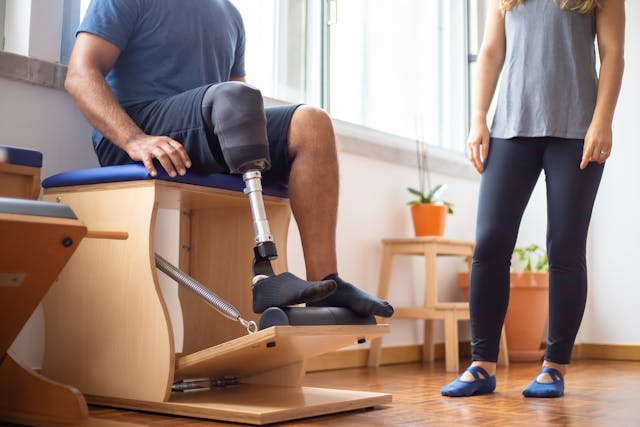
As more industries move towards subscription-based services, some fear that traditional prosthetic ownership may become obsolete. However, it is likely that both models will continue to coexist, allowing users to choose between a one-time purchase or a subscription plan based on their individual preferences.
Many people may still prefer to own their prosthetic limb outright, especially those who do not require frequent software updates or AI-powered enhancements. Others, particularly those using advanced bionic limbs with cloud integration and smart AI systems, may find that a subscription model offers greater value.
By 2030, the prosthetic industry will likely offer flexible options, allowing users to either buy their prosthetic upfront or opt for a subscription plan that includes lifetime updates and support. This balance will ensure that everyone has access to prosthetic technology in a way that fits their lifestyle and financial situation.
14. How Robobionics is Preparing for the Future of Prosthetic Subscription Models
At Robobionics, we are closely following the shift toward subscription-based prosthetic technology and exploring ways to make high-end prosthetic solutions more accessible. We understand that every user has different needs, which is why we are developing a range of flexible prosthetic plans that offer both ownership and subscription options.
Our focus is on affordable, AI-driven prosthetic limbs that can be upgraded over time, ensuring that users do not have to replace their devices every few years. We are also investing in 3D printing, cloud-based prosthetic support, and real-time AI learning, which will make subscription-based prosthetic care a practical and cost-effective solution for users worldwide.
By **2030, we aim to provide amputees with the freedom to choose between traditional prosthetic ownership and next-generation subscription-based solutions, ensuring that no one is left behind in the evolution of prosthetic technology.
Final Thoughts: Will Subscription-Based Prosthetics Become the Future?
The future of prosthetic technology is moving towards continuous upgrades, AI-driven enhancements, and cloud-based optimizations. A subscription model offers a way to make advanced bionic limbs more accessible, but challenges such as affordability, ownership concerns, and ethical issues must be addressed.
By 2030, we may see a hybrid model where users can either purchase their prosthetic limb outright or subscribe to a service plan that includes lifetime updates, remote support, and real-time AI improvements. The key will be finding the right balance between affordability, innovation, and accessibility.
If you’re interested in experiencing the future of AI-powered prosthetics, book a free demo with Robobionics today and take the next step towards a smarter, more accessible prosthetic future!



